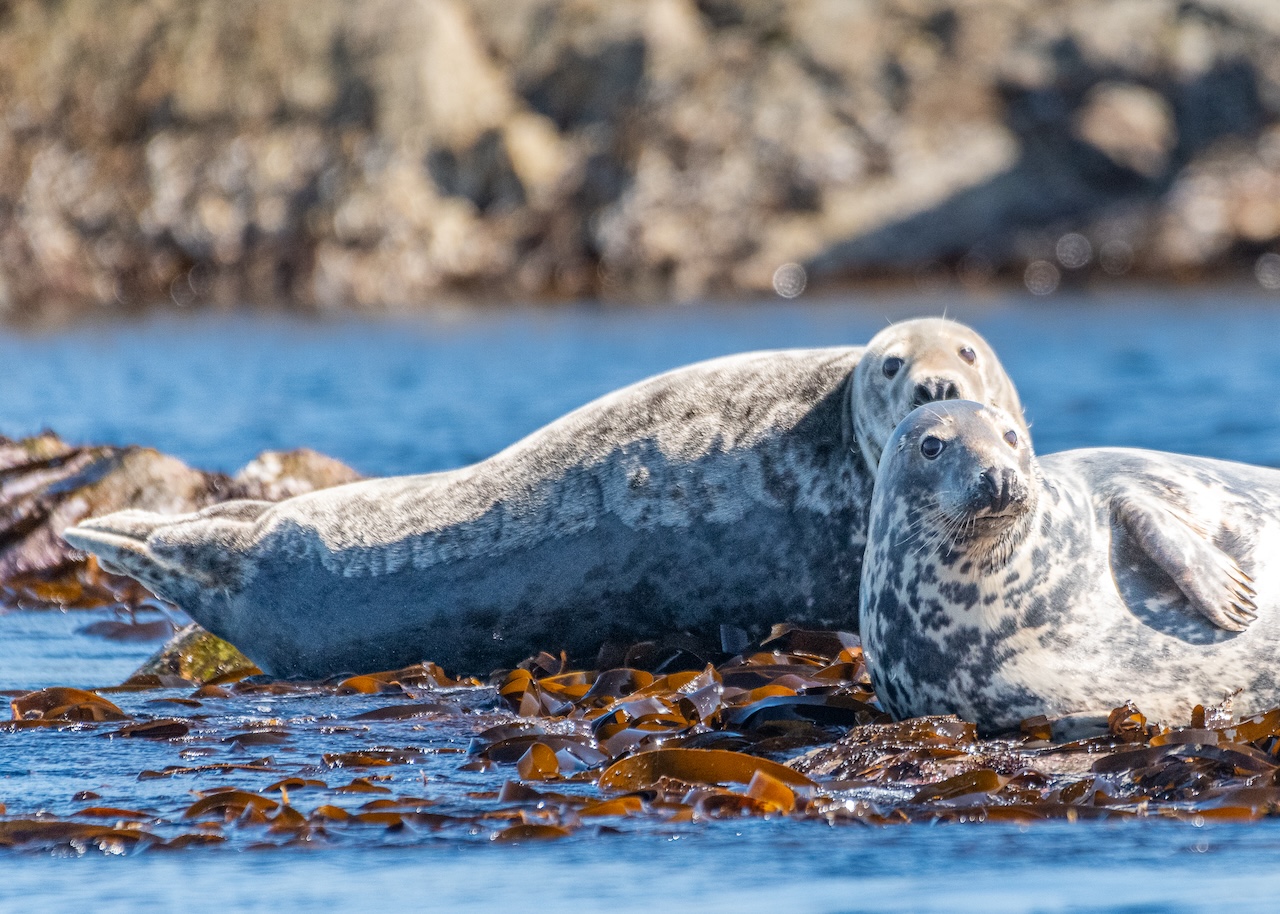Nick Walton delves into the remote, wild, and unpredictable landscapes of Scotland’s Hebrides archipelago.
When I would think of Scotland, that oh-so-distant land of my blood (at least some it, or so I was told), I would conjure up images of towering, mist-capped peaks, their flanks a patchwork of green hues punctuated by vivid purple heather and danced upon by the shadows of passing clouds. Yet here I am, cruising the shallow waters of a lagoon the colour of a Visit Maldives brochure.
And I’m not alone. Our progress is being quietly monitored by a bob – that’s right, a bob – of curious grey seals, who rise out of the water like fat periscopes, whiskers twitching, their dark eyes always comically morose, before slipping back into the chilly seas.

I’m offshore of the supermodel slim Monach Islands, low-lying wafers of white sand and emerald green grassy knolls over which stout, striped lighthouses survey the vastness of the North Atlantic. Here, in the Hebrides, on one of the world’s largest grey seal colonies, there is very little between us and Canada’s Labrador Coast, save for tiny St Kila, the outermost outpost of this wild domain, visible on the horizon but apparently a world away.
The Best Laid Plans
The plan was a simple one; to cruise the Outer Hebrides, a line of wind-whipped isles that marks the border between Scotland and the world’s most petulant ocean, culminating in a visit to coveted St Kilda, itself a green pearl in the vastness of the Atlantic. However, that’s as far as the plan got; even now, at the end of the summer season, the weather out here at the edge of the world can whip into a frenzy in hours, making any itinerary only as fallible as the next Met Office report.
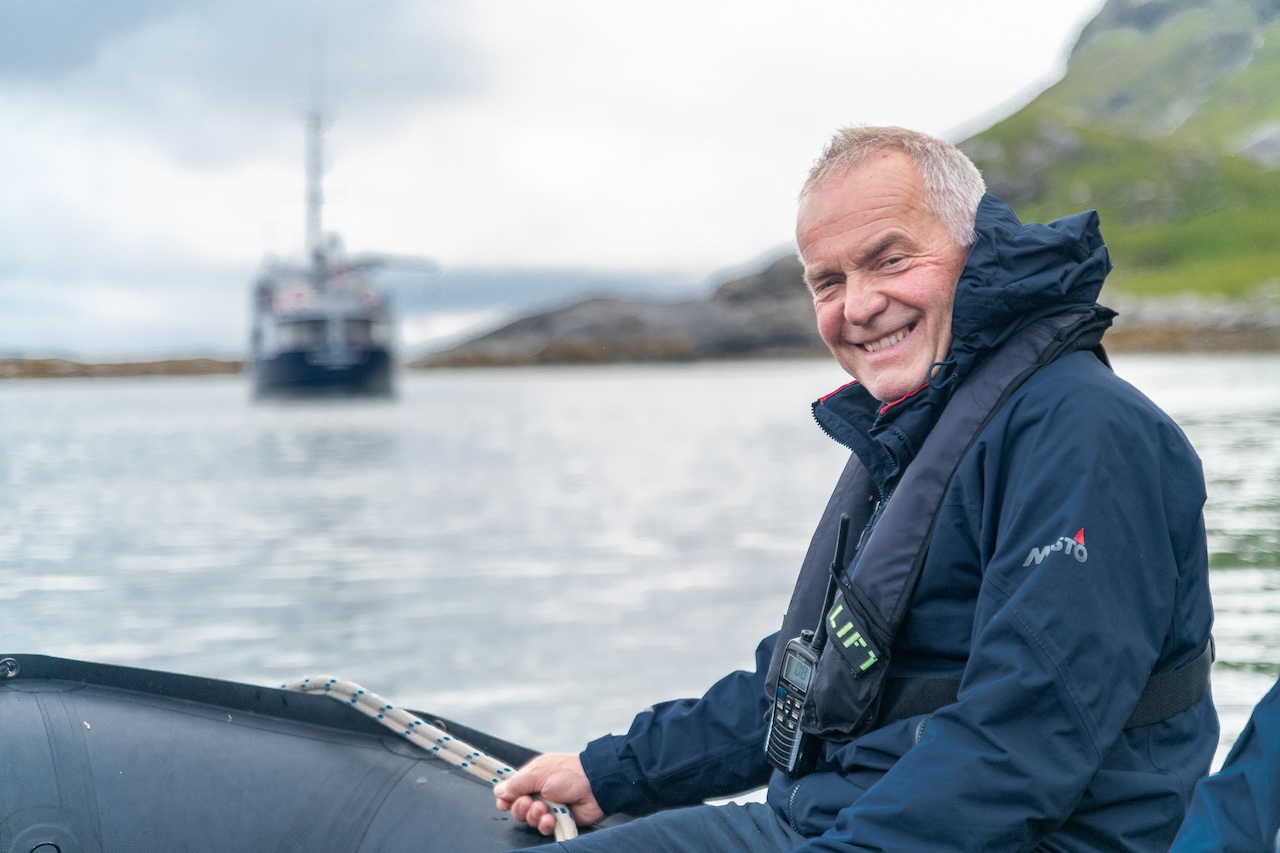
Tanned, confident, yet with a shy, self-conscious grin, Rob Barlow (above), owner of Hebrides Cruises and the skipper of the motor yacht Lucy Mary, the newest addition to the company’s fleet, watches the horizon with all the nonchalance of a Golden Era film star. However, there’s a tightness to his eyes that’s only exacerbated by reports over the wires of Storm Betty’s approach. It seems, as is so often the case, St Kilda will slip from our reach.
However, that’s the nature of expedition cruising; you need to be able to roll with the punches, and we’ve fared pretty well till now. We had left postcard-perfect Oban, a beautiful little town on the west coast straight out of a Scottish remake of Midsomer Murders, in bright sunshine three days earlier, slipping past the ivy-covered slab of Dunollie Castle and into the Sound of Mull with barely a ripple on the water.
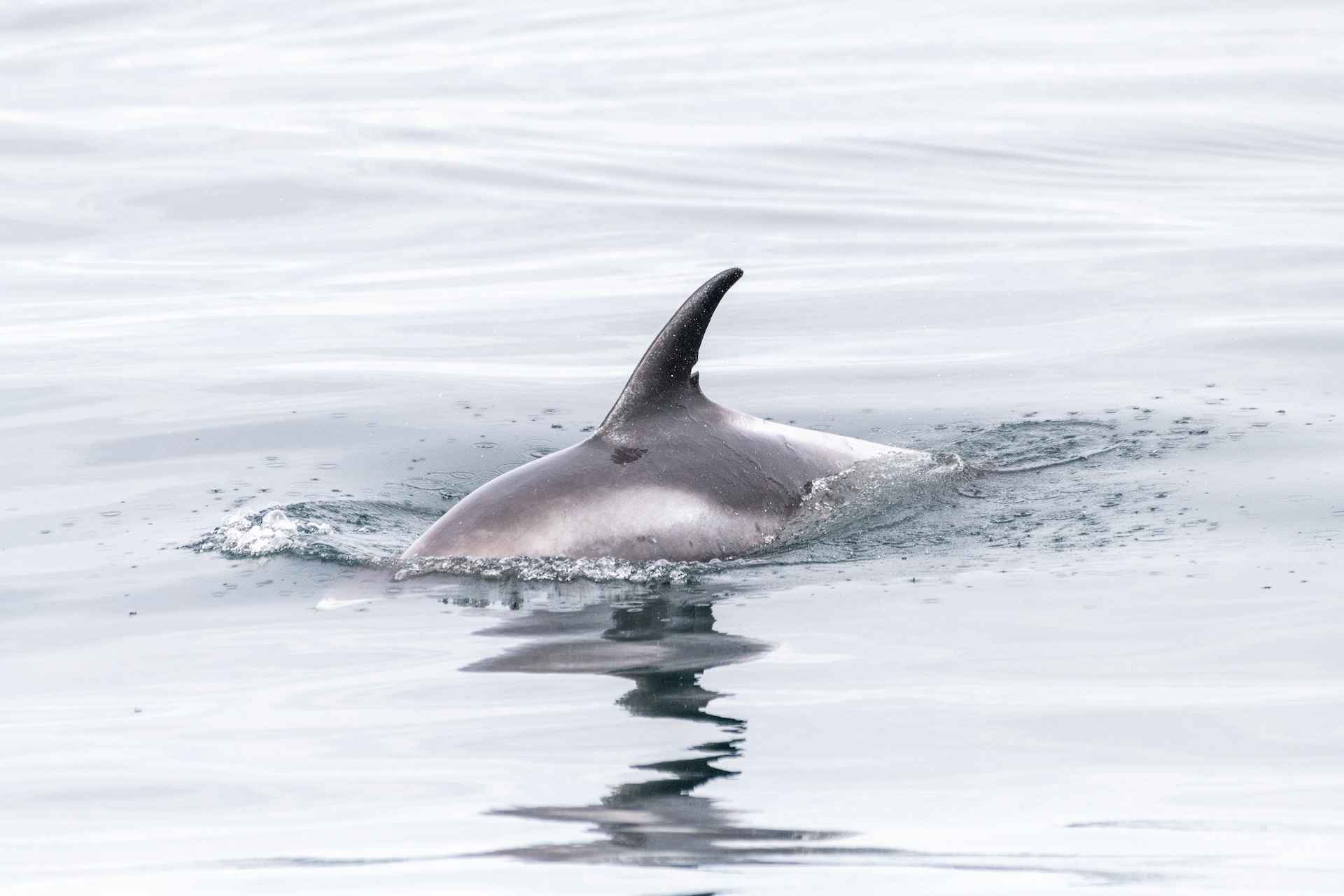
In the broad Sound, rafts of kittiwakes had bobbed past and eagle-eyed ship’s naturalist Bella had pointed out shy porpoises, sleek and black as coal, that surfaced and just as quickly slipped beneath the calm waters (they’re much less inquisitive than the pods of common dolphins that regularly surf the Lucy Mary’s bow wave). The flanks of the island of Mull to the south were a blaze of colour straight out of a Sidney Richard Percy painting, deep green stripes with fawn and the pink of ripe rhubarb stalks.
The next day we crossed The Minch, an oddly named and rather notorious stretch of open water between the mainland and the isles of Harris and Lewis, and spied seals bobbing like inquisitive sirens; infinitely graceful northern gannets, the British Isle’s largest sea bird; and even rare white-beaked dolphins. However, by afternoon, clouds begin to cling to the horizon, stacking into great cathedrals far out to sea.
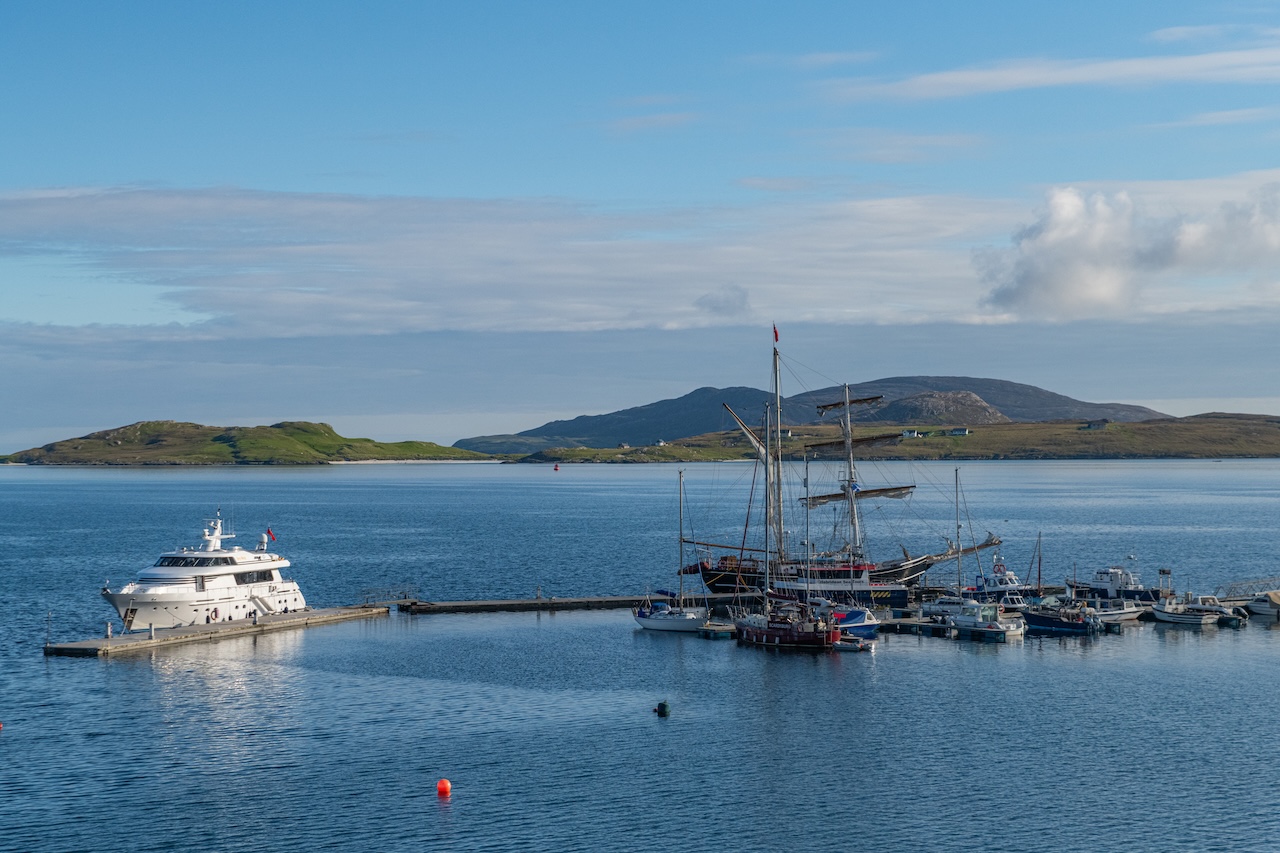
A Land Defined by the Elements
After visiting the Monachs, with its beds of sea kelp and retriever-like seals, we make the most of the lingering calm and continue south along the Outer Hebrides chain. “Even the forecasters find it hard to forecast in the Hebrides,” says Rob as we’re escorted into Castlebay by the Barro Boys, a pod of local bottlenose dolphins that love to show off, before anchoring a haggis’ throw from pint-sized Kisimul Castle. As Abby, the ship’s all-doing, all-knowing, always cheerful steward, serves gin and tonics on the sun-kissed transom, we learn that the castle is now leased to Historic Environment Scotland by the Clan MacNeil chief for an annual rent of £1 and a bottle of whisky.
Despite the sunshine, storm petrels, great skuas and white tail sea eagles dance in the thermals above and change is in the air. On the horizon, the wind has whipped up the sea and an army of white caps is making a panzer movement from the south. Leaving Castlebay, we join a fleet of crabbers, hardy, economical little boats with orange buoys on their decks and study sailors at their helms, and flee up the sheltered east coast of North Uist to the relative shelter of Sgarasta Mohr on the Isle of Harris, famed for its tweed, which is exported around the world.
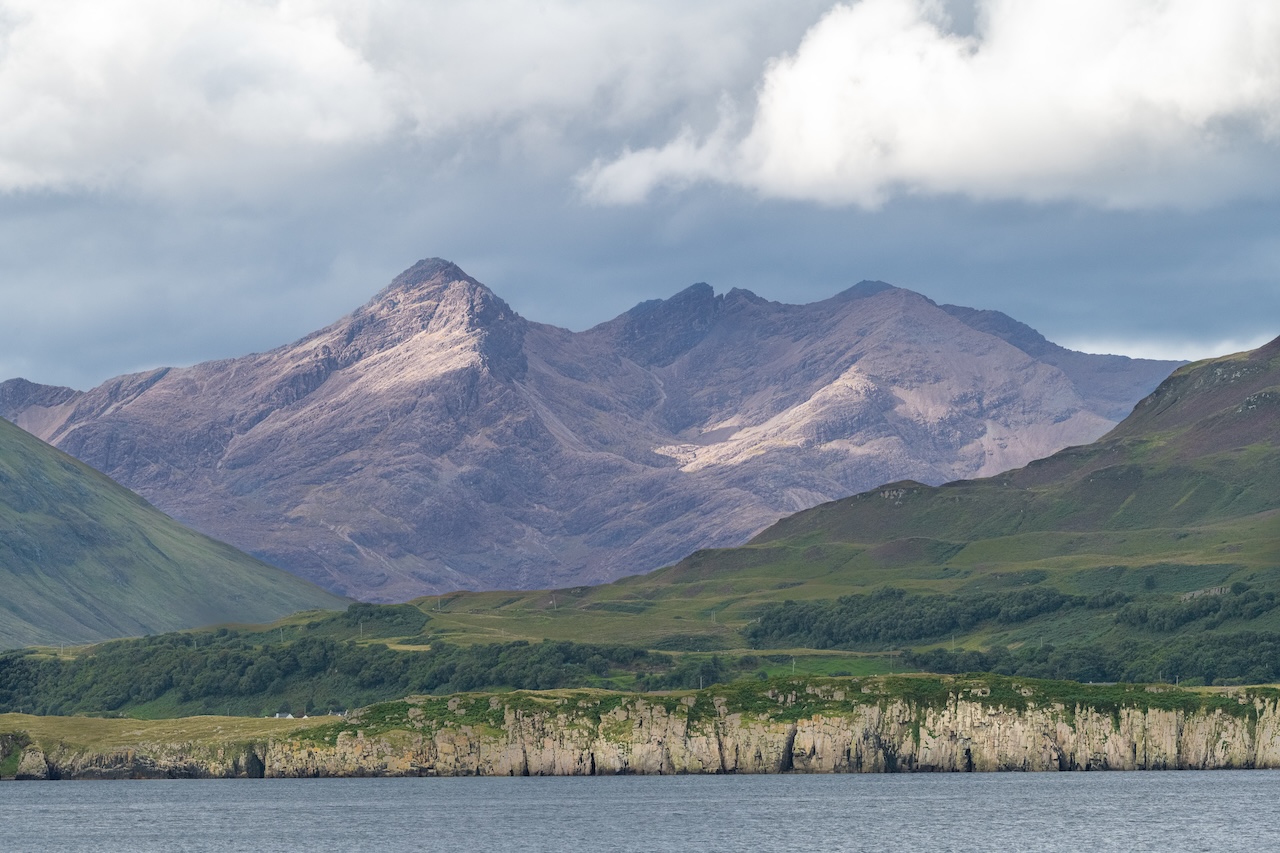
The worst of the weather is yet to come but Storm Betty’s tendrils catch at any exposed skin the next day as we motor south and then east and north, through the Sound of Harris and into Tarbert, where there’s time to visit the thoroughly modern Harris Distillery (Be sure to pick up a bottle of their sugar kelp gin).
Rob’s plans are fluid, an easier task with a vessel carrying just seven passengers, and he takes advantage of his profound knowledge of the Hebrides to map out contingencies that still offer spectacular landscapes at every turn. We cross The Minch again, this time with the tempest at our heels, and make for the towering cliffs and purple peaks of Skye. Pods of dolphins become regular companions, and white tail sea eagles parry with flocks of obstinate gulls in the thermals that clamber up the sheer sea cliffs. On the sheltered north coast, hardy sheep cling to near-vertical flanks, and a minke whale circles us before diving deep.
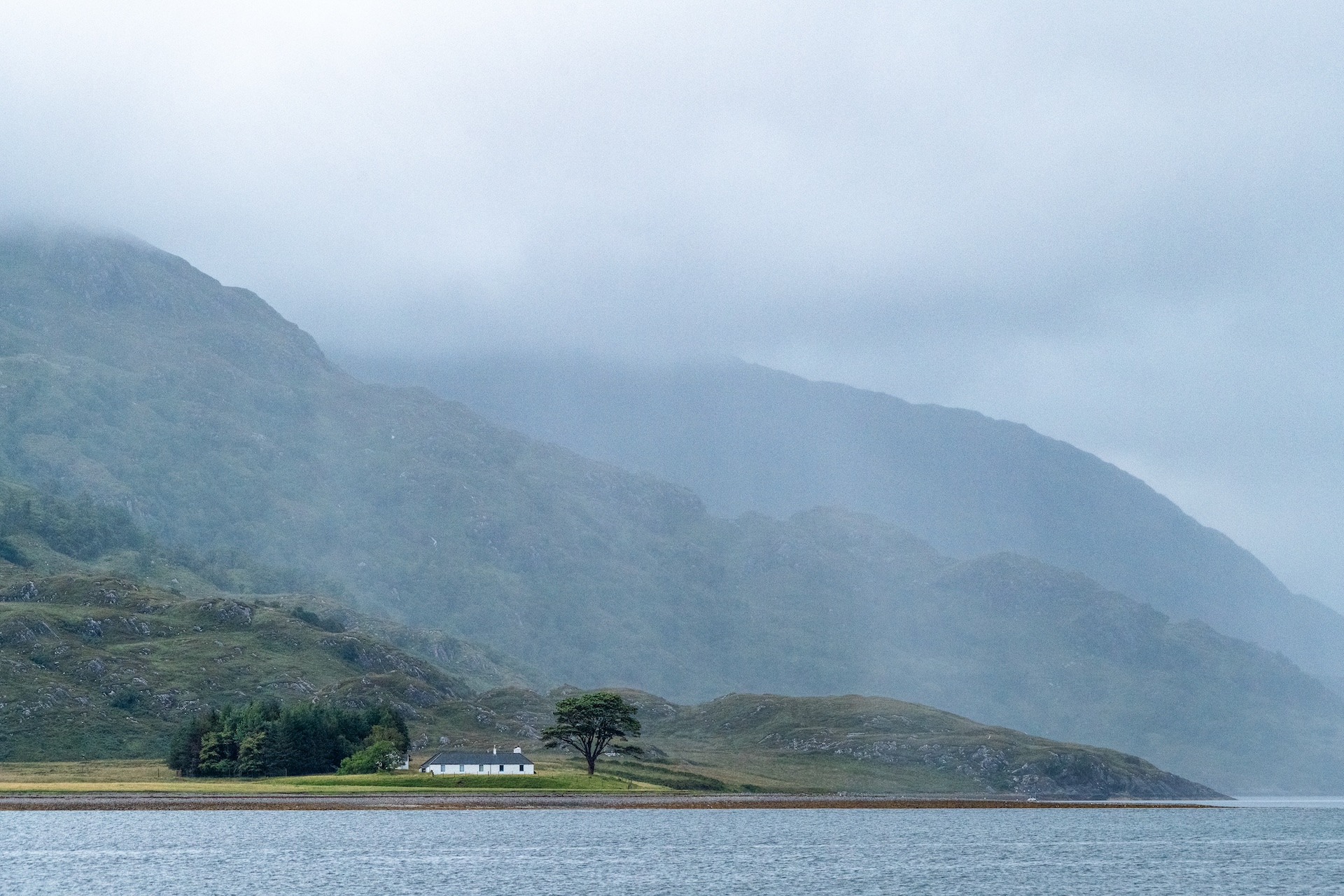
Battening Down the Hatches
Rob steers us into a narrow strip of water, the Inner Sound, between the islands of Skye and Raasay and we literally batten down the hatches. As Abby and Perry, the yacht’s talented chef, serve a delectable meal of salmon wellington with roast pumpkin, I watch ambitious campers on a nearby hill repeg their tents as the gusts gain strength.
After a night of winds that scream like a banshee over the Lucy Mary’s raked decks, the worst of the storm passes. However, great curtains of rain and icy gusts chase us across the open water between Skye and the mainland and we find refuge in Loch Carron and brave the pounding rain to find a welcoming pub in the hamlet of Plockton for a soul-warming dram (the Highland village’s four fish and chip shops were collectively awarded best in Britain by Travel booking website Omio).
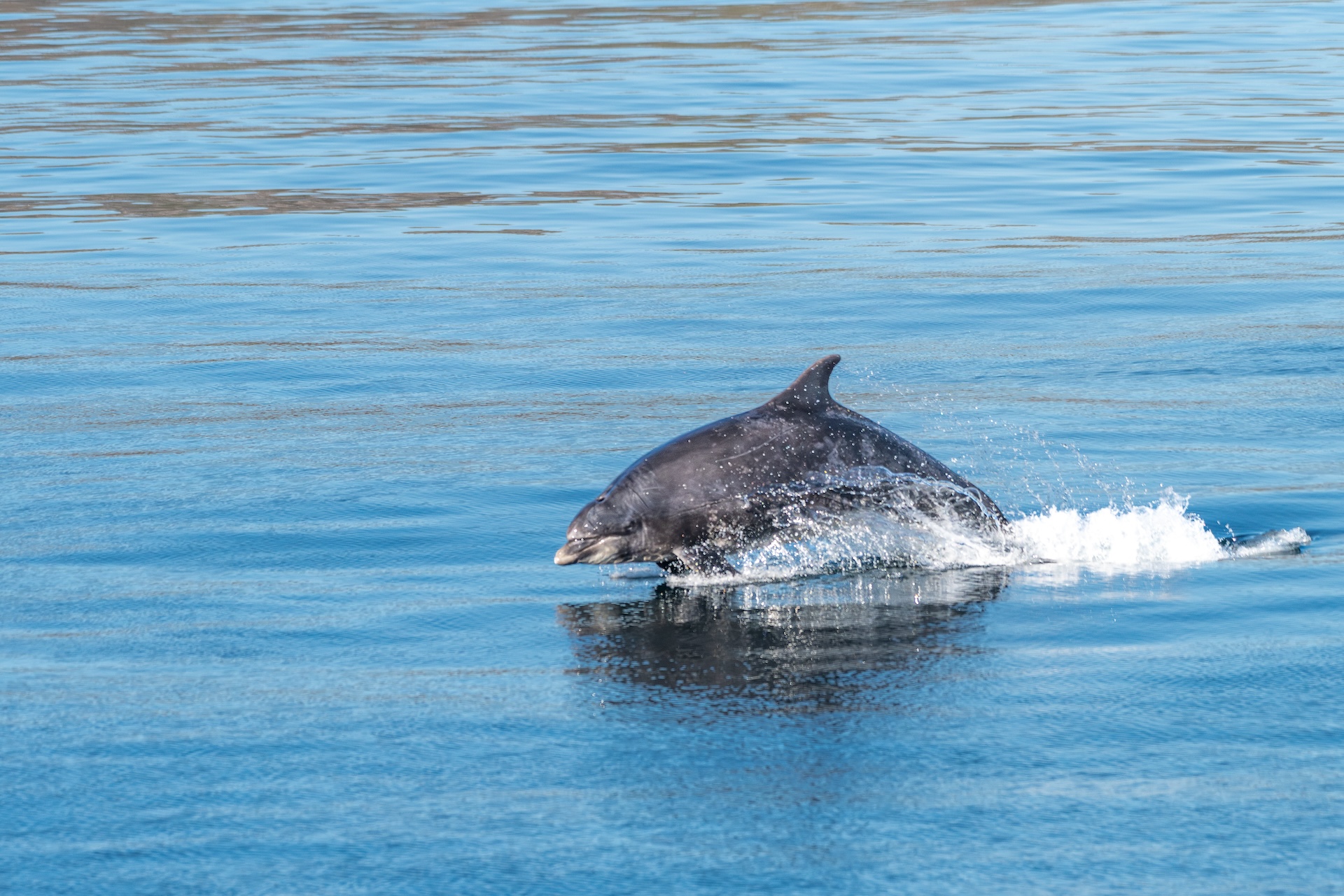
As we depart Loch Carron, the heavens still heavy with brooding clouds, we pass sprawling Duncraig Castle, which was recently brought by a secret owner, who is apparently attempting to renovate it. Ken, a Liverpudlian with a broad Beetles accent and one of my six companions on the yacht, reads Duncraig’s history online and laments that our cruise, “much like that castle”, is cursed, but I couldn’t disagree more. My fellow guests, all sprightly yet elderly Brits, have been to the region before, and are content to sit out the weather in the yacht’s salon reading and sipping English Breakfast and the odd cheeky Chianti. However, I’m loving every moment of our adventure.
Wild Life & Wild Weather
When we’re motoring, I join Bella (below) and Clay, a young naturalist with a master’s in Environmental Conservation, on the yacht’s fly deck, looking for bird life, and sea life, and generally breathing in what has to be one of the most beautiful places on God’s green earth. After braving the Inner Sound again, we nip under the Skye Bridge and seek shelter in the Kyle of Lochalsh, anchoring near the towering 13th-century Eilean Donan Castle, which itself is dwarfed by the surrounding peaks, the first ranks of the Scottish Highlands.
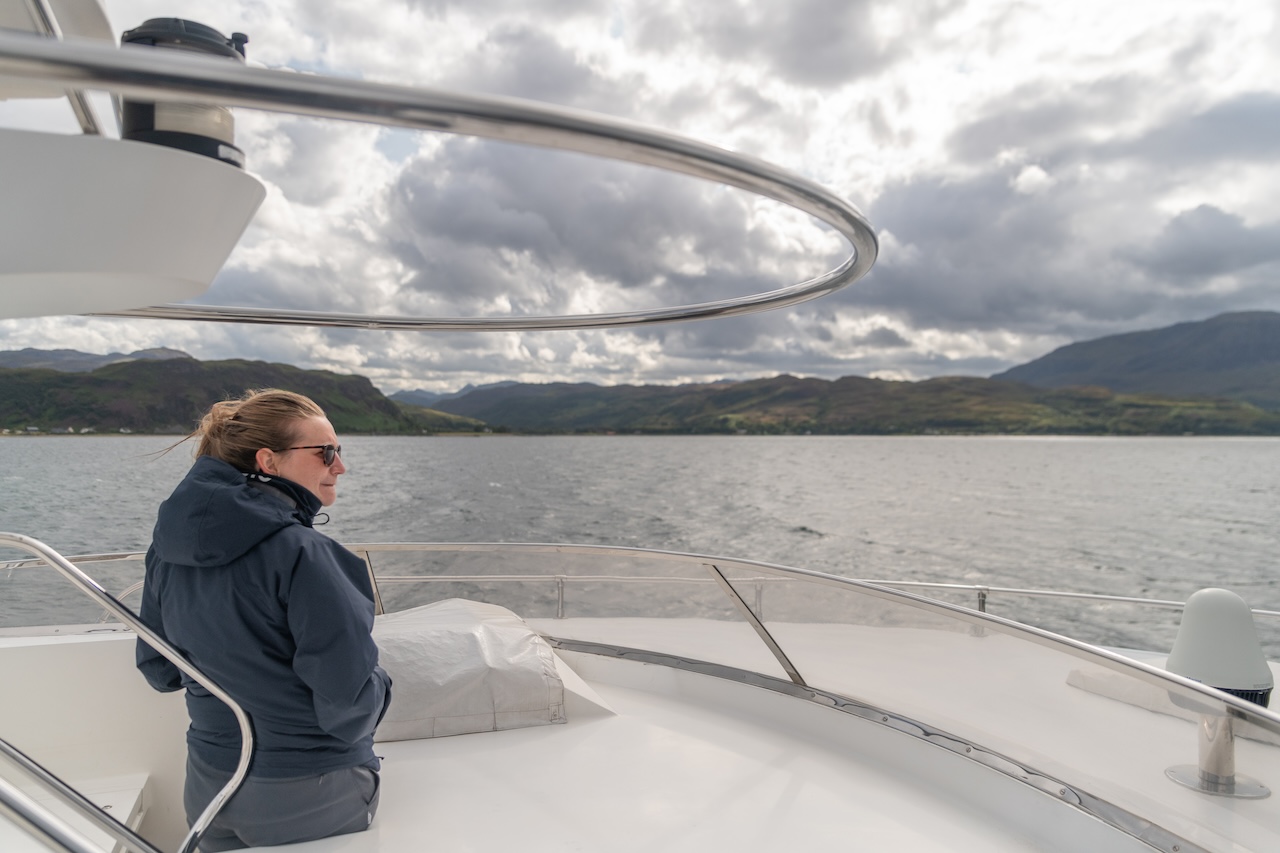
Rob – who fascinates us each evening with stories from his time in the Air Force, and working as a deep-sea oil rig diver, scallop diver, and maintenance diver on Scottish salmon farms – times our passage down the Kyle Rhea, a narrow channel between Skye and Inverness-shire that’s notorious for its overly eager tides, to perfection. As we cruise south, I watch sausage-shaped harbour seals, fat after a summer of plenty, bask on exposed rocks, tiny, brightly coloured cottages lined up on the banks beyond and think there couldn’t be a more inviting setting for the urban weary.
Rob gives in to our nudging and tempts the weather gods, cruising the Lucy Mary down dramatic Loch Beag so we can land at the remote village of Inverie on the south shore of the Knoydart peninsula, home to the Old Forge Pub, officially the most remote watering hole on the British mainland. The pub is not connected by road and thirsty hikers must brave a 25-kilometre trail over the mountain to reach it but are rewarded with a limited-edition ale when they do. It’s well worth the southerly winds that whip the ship’s tender mercilessly as we depart, our appetites for beer and adventure sated.
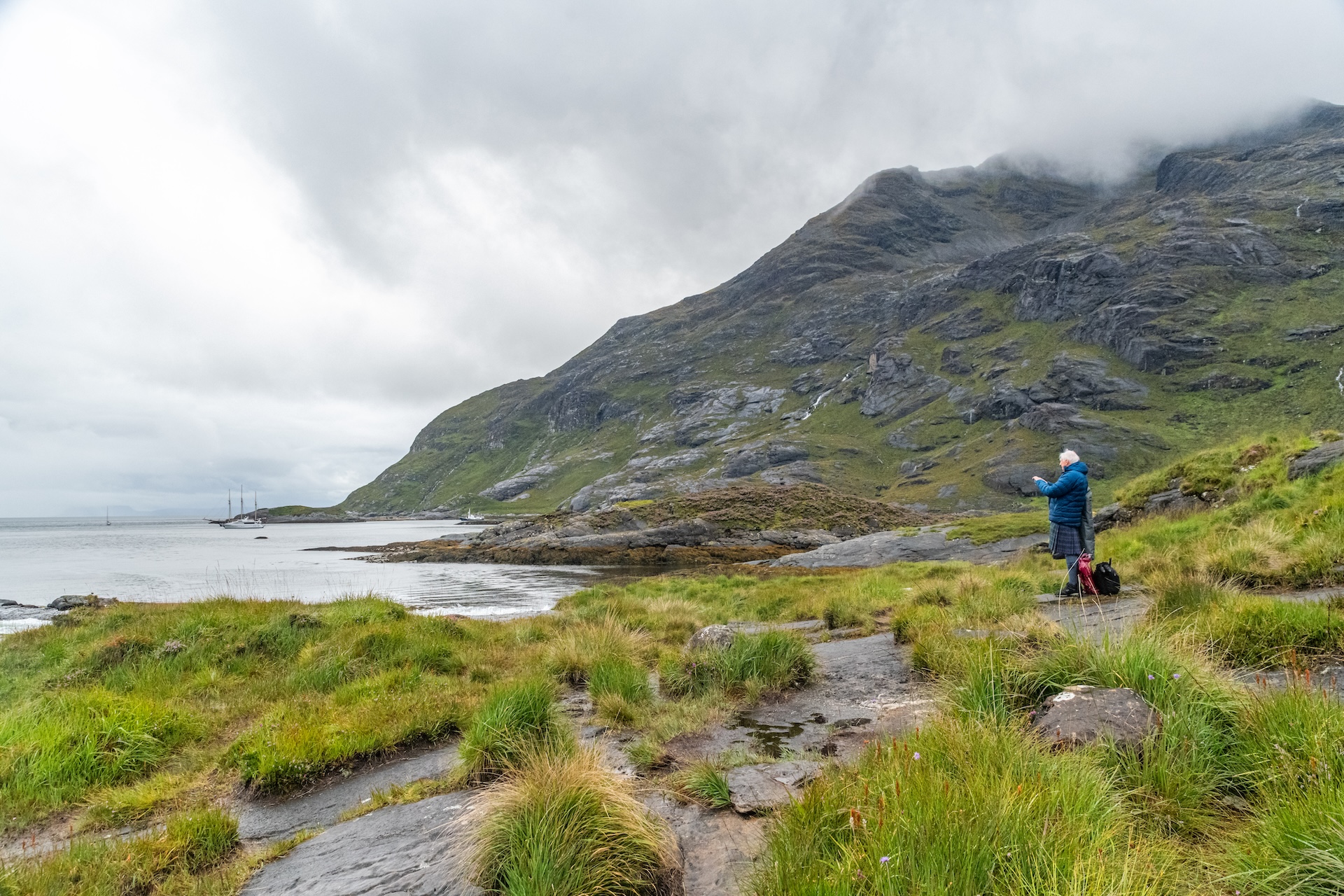
By late afternoon we’re slipping into Loch Nevis. On one side the steep pine forests that march to the waters are home to reintroduced white-tailed eagles that call to each other as we pass. Across the mirrorlike water, sunlight chases the shadows over the surrounding peaks, casting the heather lilac and then imperial purple. We anchor in Tarbet Bay, just off the Nevis estate of billionaire theatre producer Sir Cameron Mackintosh, who has used funds from his impressive fortune – made producing the likes of The Phantom of the Opera and Miss Saigon – to breathe life into the nearby fishing village of Mallige. We spy a figure walking a dog on the grounds the next morning and convince ourselves it’s the great man himself.
Homeward Bound
Finally, our adventure in the Hebrides draws to an end. After a visit to spectacular Loch na Cuilce’s thundering waterfalls, which cast infinite rainbows above tiny Eilean Island, where juvenile seals gossip on the slick rocks, and where I brave the chilly, pure waters of serene Loch Coruisk as they tumble down meandering rapids into the sea, we make for Oban once again.
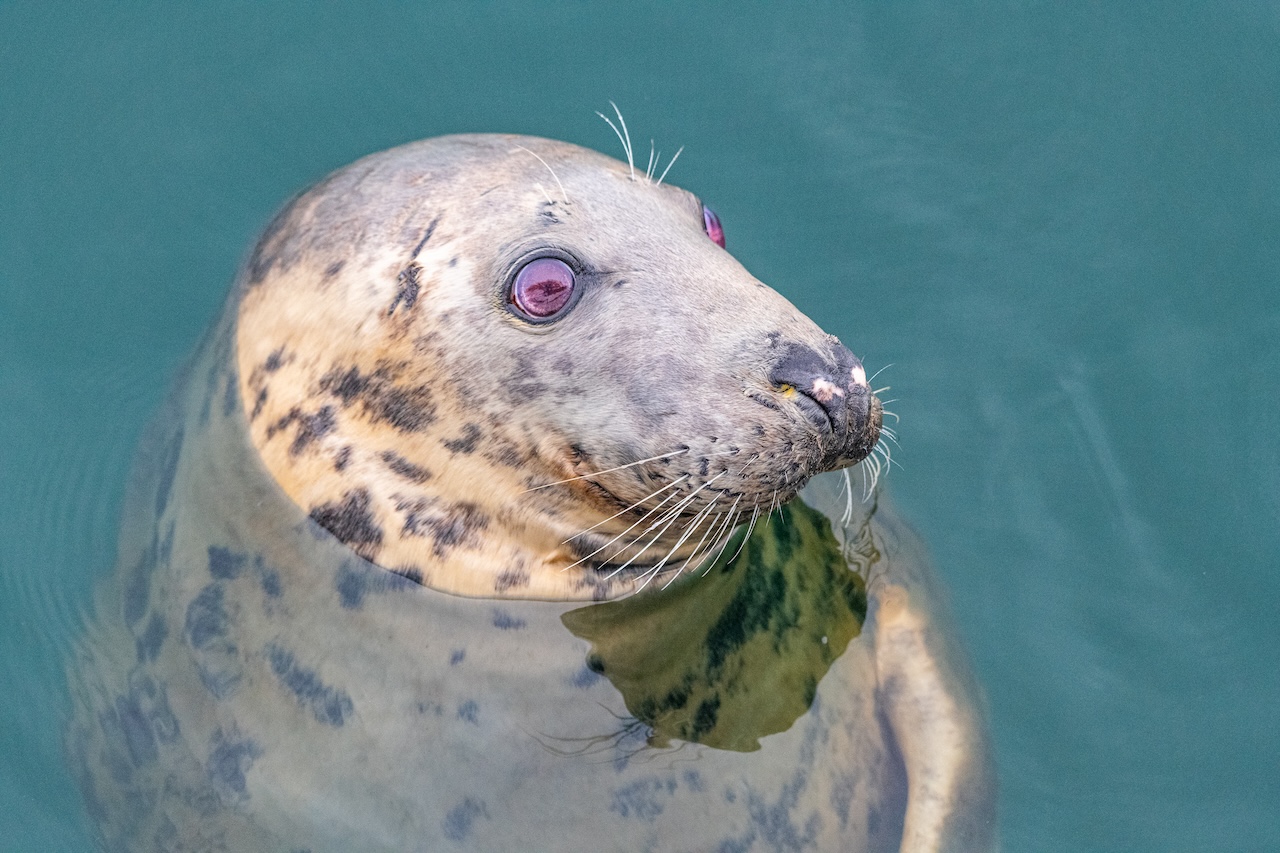
Common dolphins put on a final show and gannets soar like balsa wood gliders above as we cruise the Sound of Mull, passing the ruins of Ardtornish Castle, which sits at the seaward end of a mile-long promontory. This remote outpost was once used by the Clan Donald to collect tolls from travellers on the Sound. Whatever they were charging at this ancient gateway to the Hebrides, after a fascinating sojourn through its labyrinthine waterways and dramatic landscapes, I’m convinced it would have been worth every penny.

